A professional basketball player, Kate Martin plays for the Golden State Valkyries of the WNBA. She has been a key player of the Iowa Hawkeyes and has captained the team for four seasons. She was drafted for Las Vegas Aces in the 2024 WNBA draft. She was drafted in the second round, 18th overall.
NIL
Jay Williams declares NIL 'the death of mid
Jay Williams certainly thinks so. And why? Williams, however, certainly didn’t ignore it — his bracket was as chalk as they come. “It’s going to be more of a rarity due to the fact that I think we’re going to see a lot of players that are playing for the Colorado State’s, that are playing […]


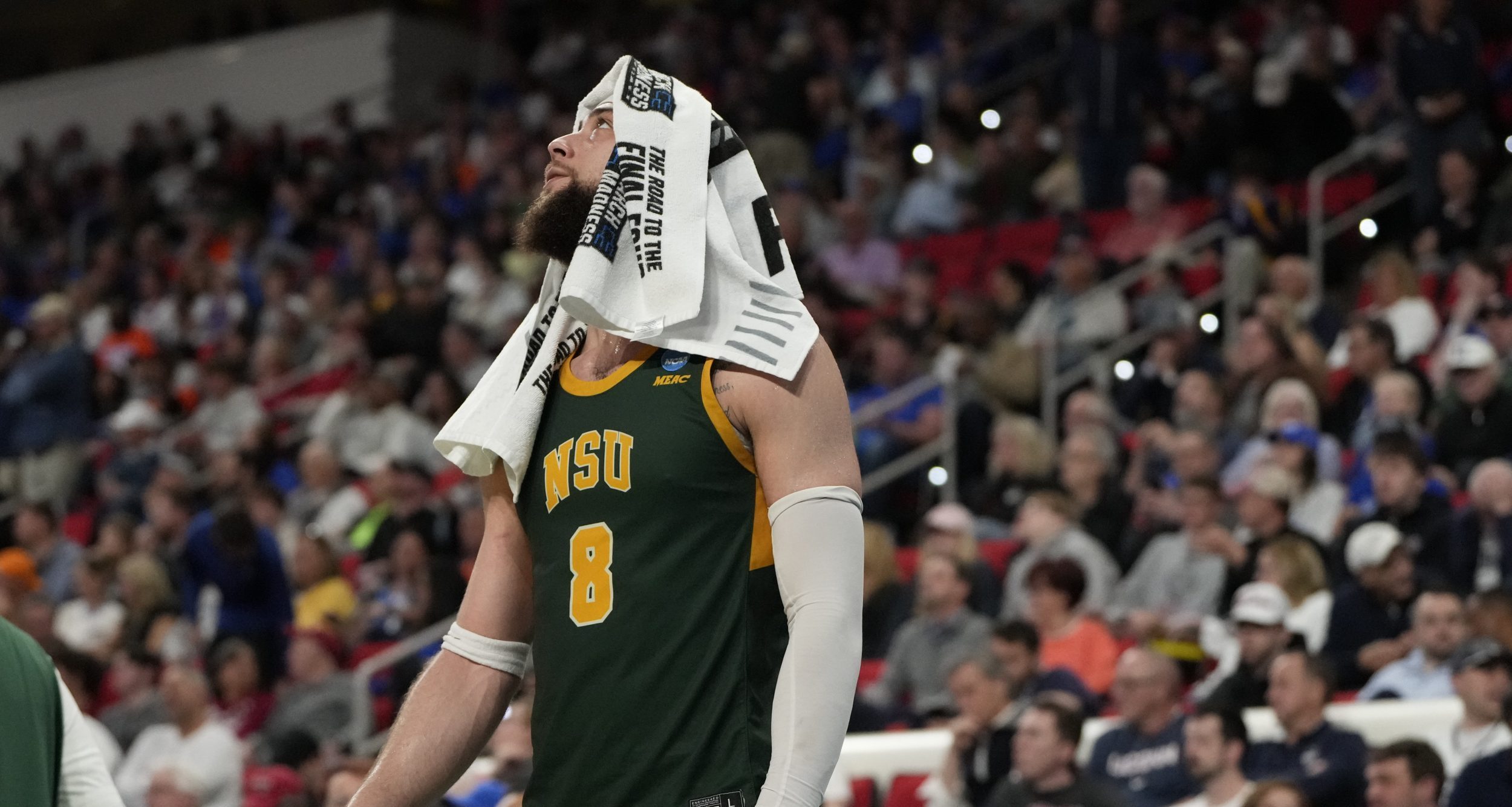
Jay Williams certainly thinks so.
And why?
Williams, however, certainly didn’t ignore it — his bracket was as chalk as they come.
“It’s going to be more of a rarity due to the fact that I think we’re going to see a lot of players that are playing for the Colorado State’s, that are playing for the McNeese’s, that are playing for the Drake’s, that are going to get poached by mid-level Power Four, Power Five conferences,” added Williams. “And you’re going to see teams in the middle of the pack in the Big Ten, in the middle of the pack of the Big 12, see these players and say, ‘Hey, we’ll give you 4x.’ ‘We’ll give you 5x of what you’re earning at your mid-major conference.’
“And when I talk to mid-major coaches, the consistent complaint I always hear from them is retention. ‘We can’t hold onto players because these Power Four schools are just clipping and taking them away from us. And that’s why I think you’re seeing chalk as much as you’re seeing right now, as we get to the Sweet 16. You’re not seeing any mid-major left; you’re seeing the big boys. And I think that’s gonna be the case moving forward.
But that’s beside the point here.
— Get Up (@GetUpESPN) March 24, 2025
Just here for the comments…. pic.twitter.com/rvIWuqTC8W
And let’s be honest, Colorado State was under-seeded to begin with.
On Monday’s episode of Get Up, he argued that NIL is killing off Cinderella stories, stripping mid-majors of their best talent before they ever get a chance to make a name for themselves in March. The days of a George Mason or a Loyola Chicago shocking the world might be fading, replaced by a system where top mid-major players get poached before they can even dream of a Final Four.
The results backed up his point.
UC San Diego pushed Michigan to the brink. Robert Morris gave Alabama a scare. High Point threw everything at Purdue.
Maybe Cinderella isn’t dead. But she’s certainly running out of time before midnight strikes.
— Jay Williams (@RealJayWilliams) March 22, 2025
Whether that lesson sticks when we fill out our brackets next year remains to be seen. In the meantime, we’re left chewing on the possibility that the era of Name, Image, and Likeness (NIL) and the transfer portal have effectively shut the door on mid-majors making deep runs.
It’s a bleak outlook but one that feels harder to ignore with each passing tournament.
“I think my biggest takeaway of everything over the weekend was that NIL is the death of mid-major Cinderella runs,” the former Duke Blue Devils star said. “It still can happen, but I think it’s gonna be more of a rarity?”
—@RealJayWilliams on the impact of NIL in college basketball pic.twitter.com/Z4xguBu7Hj
But pushing a team to the limit and actually beating them are two different things. McNeese State barely eked out a win over Clemson, only to get steamrolled by Purdue. And while Colorado State took down Memphis in the classic 12-over-5 upset, they were knocked out in heartbreaking fashion by Maryland, falling on a controversial buzzer-beater. Without that shot, the Rams — not the Terrapins — would be in the Sweet 16.
If you’re like me and couldn’t resist loading up your March Madness bracket with mid-major upsets, you’re probably sitting in the bottom 30% of the leaderboard. At this point, it’s fair to say we’ve learned our lesson about trusting Cinderella — especially against power conference teams.
“NIL is the death of mid-major Cinderella runs. … It still can happen, but I think it’s going to be more of a rarity.”
NIL
Razorbacks’ Sam Pittman probably shaking head in agreement with Deion Sanders
FRISCO, Texas — It’s probably more likely than anyone would admit, but Arkansas coach Sam Pittman just might be in complete agreement with Deion. Colorado coach Deion Sanders said Wednesday that college football needs a salary cap to restore competitive balance, warning that unchecked spending and NIL deals are making the sport harder to manage. […]

FRISCO, Texas — It’s probably more likely than anyone would admit, but Arkansas coach Sam Pittman just might be in complete agreement with Deion.
Colorado coach Deion Sanders said Wednesday that college football needs a salary cap to restore competitive balance, warning that unchecked spending and NIL deals are making the sport harder to manage.
Speaking at Big 12 media days, Sanders said the current system, which allows for unregulated player movement and rising salaries through name, image and likeness deals, has left some programs unable to compete for top talent.
“I wish there was a cap,” Sanders said during a coaches’ roundtable. “Like, the top-of-the-line player makes this, and if you’re not that type of guy, you know you’re not going to make that. That’s what the NFL does.
“So the problem is, you got a guy that’s not that darn good, but he could go to another school and they give him a half million dollars. You can’t compete with that. And it don’t make sense.”
“All you gotta do is look at the [CFP] and see what those teams spent, and you’ll understand darn well why they’re in the playoffs.”
Deion Sanders on NIL and the current state of college football. pic.twitter.com/y6A5C3dWUP
— ESPN (@espn) July 9, 2025
Pittman will get his chance to respond at SEC Media Days on Thursday. It’s probably a safe bet that will be one of the biggest questions for every coach.
Having written and talked about Sanders for 35 years since he was in high school, I have agreed with him on a lot. It’s not hard to ignore all of the circus if you just try it.
He makes sense more than some would think. The NCAA and power conferences recently approved a revenue-sharing agreement, known as the House settlement, that allows schools to share up to $20.5 million per year with athletes.
That cap is expected to rise to about $32 million over the next decade. That probably wouldn’t be enough because schools have pretty much shown they will find a way to spend it.
Sanders said the changes are not enough to level the playing field.
“You understand darn near why they’re in the playoffs,” Sanders said, referring to the College Football Playoff. “It’s kind of hard to compete with somebody who’s giving $25-30 million to a freshman class. It’s crazy.”
Top programs, often with more resources and donor support, are able to offer larger NIL deals to recruits and transfer players. A lot of folks didn’t seem to think of that on the latest settlement that hasn’t landed in court yet.
Some coaches estimate schools must spend close to $20 million annually on football rosters to keep up with the nation’s elite teams.
“Nobody knows where it’s gonna land or where it’s going,” Sanders said. “There’s gotta be a salary cap on this stuff because this stuff is going crazy.”
Should there be a salary cap in college football? Deion Sanders suggested such at Big 12 Media Day? We dive in on College Football Live with @harrylylesjr and @TomLuginbill. pic.twitter.com/I0v5YQo6lL
— Pete Thamel (@PeteThamel) July 10, 2025
Legal experts and athletics directors have raised concerns that imposing a strict cap on athlete pay could lead to antitrust challenges. The House settlement itself was a response to lawsuits over compensation restrictions and limits could trigger more litigation.
For Sanders, the lack of transparency and standards is as damaging as the money itself.
“I wish it was truly equality,” Sanders said. “Now they go back to doing stuff under the table. They go back to the agents. Now you’ve got parents trying to be agents, you’ve got the homeboys trying to be agents, you’ve got the friends trying to be agents.
“You got a lot of bull junk (no, that’s not edited) going on, and quite frankly, we’re sick of it. I’ll say it for everybody we’re sick of it.”
Under the new revenue-sharing rules, schools can distribute up to $20.5 million per year to athletes in all sports. The cap will rise by about 4% annually, but NIL deals negotiated independently with boosters and sponsors are not included in the official cap.
This has created a system with both direct school payments and outside compensation. Don’t talk about the “market value” approval because what someone will pay determines that number, not some objective opinion of an accountant.
Some athletic directors have likened the new landscape to NFL free agency, but without the regulations imposed by professional leagues.
“We’re developing players for three years, and then someone else comes in and offers them more money to transfer,” one Power Five athletics director said. “You can’t build a team that way.”
Sanders, who is set to earn $10 million this year and is among the sport’s highest-paid coaches, said he will continue to advocate for a system that supports all athletes and programs.
Don’t think Pittman is the only coach who agrees with him, either. The number is probably much larger than most would even think.
But Sanders said it in a very public forum. Maybe the right people are listening.
College Sports
Buford DB Tyriq Green Commits to Georgia
The Dawgs just added another game-changer to the family. Buford’s own Tyriq “Ty Boogie” Green, a dynamic 4-star athlete from the Class of 2026, has officially committed to the University of Georgia, choosing the Dawgs over top programs like Miami and Auburn. Once seen as a tough pull, Buford is quickly becoming a UGA pipeline, […]

The Dawgs just added another game-changer to the family.
Buford’s own Tyriq “Ty Boogie” Green, a dynamic 4-star athlete from the Class of 2026, has officially committed to the University of Georgia, choosing the Dawgs over top programs like Miami and Auburn.
Once seen as a tough pull, Buford is quickly becoming a UGA pipeline, and Ty Boogie is the latest elite talent to keep that momentum going. With elite production on both sides of the ball, Green brings versatility, leadership, and a true “do-it-all” presence to Athens.
“I feel like it’s family,” Green said of UGA. “They practice hard, they stay ready, and they believe in me.”
Guided by strong relationships with Coach Travaris Robinson and Kirby Smart, Green joins a stacked DB class — and proves Georgia continues to recruit and retain the very best from its backyard.

NIL
Hill
There is a four-word sentence that would have been difficult to ever imagine typing even just a few days ago. Mike Gundy is right. OK, I said it. We got that out of the way. Let’s not kid ourselves. The Oklahoma State football coach didn’t exactly arrive at a correct opinion through altruism. But hey, […]



There is a four-word sentence that would have been difficult to ever imagine typing even just a few days ago.
Mike Gundy is right.
OK, I said it. We got that out of the way.
Let’s not kid ourselves. The Oklahoma State football coach didn’t exactly arrive at a correct opinion through altruism. But hey, that whole saying about a broken clock has been proved right yet again.
Gundy this week directly articulated what many in the college sports landscape are only willing to say behind the scenes. All of these new rules and regulations created by the House v. NCAA settlement and the implementation of revenue sharing for college athletes just isn’t working.
Already.
And we’re only like 10 days into the rollout.
“You’ve gotta restructure your systems and admit players are employees,” Gundy told the “Andy & Ari On3” podcast at Big 12 media day. “Then you can build collective bargaining. We’ve all talked about it. But you have to admit they’re employees. You can do it all. You can have a (salary cap) and you need an entry level for a high school player coming in because it’s not sustainable.”
Those voices that have been against players getting paid at all certainly aren’t going to like the idea of unionization and even more power, but it might be the only way forward.
Gundy’s evolution on the issue is a result of a realization his program, which tried to hold the line against pay-for-play recruiting in the transfer portal, can’t compete in the new era.
While his motives may not be pure, Gundy has at least arrived in the place where most everyone else will be in time.
Because remember how the settlement was supposed to fix so much of the broken pay structure in college sports? How it was going to bring transparency to a process that severely lacked it and at least put teams on an even playing field in terms of moving the payments above board while still allowing the athletes to profit off their individual value above and beyond the revenue sharing money while providing some oversight to the transactions?
It truly was an admirable endeavor. It just wasn’t going to work.
Ideally, this model was going to be a solid bridge to the inevitable and potentially a good foundation from which to build the future model for college sports.
But that concept certainly wasn’t helped by the settlement getting approved just days before it was set to be implemented. That created chaos.
While programs were cleared to immediately start compensating athletes up to the salary cap, the firm Deloitte was tasked by the power conference-backed College Sports Commission with deciding whether individual players’ NIL deals above and beyond that were legitimate and of fair market value.
It would take far more time and words to explain the difficulties of determining such a standard. So, it seems what has happened in practice is the College Sports Commission has decided to simply reject all deals done with athletes through collectives as a general practice as a starting point.
Collectives can serve as a conduit to connect athletes with legitimate businesses, it clarified in a letter, but can’t essentially hold their own fundraising events to collect money to pay players. It’s a fine line.
But it also means players were made promises that may not actually come to fruition.
Some of the more forward-thinking groups front-loaded deals and got the payments made before this process started a couple weeks ago, but others are left wondering what happens next.
Attorneys for the players have lashed out, demanding a retraction of the ruling on collective payments and calling it a restriction of the players’ earning potential that runs counter to the settlement.
On the flip side, allowing collectives to simply accumulate and distribute vast resources as a way to circumvent the new salary cap rules kind of defeats the whole competitive balance thing.
It’s incredibly complicated.
“We don’t know the rules,” Arizona State coach Kenny Dillingham admitted. “The settlement passed, but who knows what Deloitte is going to clear? Until there is clarity, you’re living in limbo.”
Exactly.
Gundy is right. So is Dillingham. Sadly, this temporary fix has to be extremely short-lived.
Chances are even some sort of CBA isn’t going to provide all the answers, but it’s the logical next step.
Contact Adam Hill at ahill@reviewjournal.com. Follow @AdamHillLVRJ on X.
NIL
Hot Seat: CBS Sports ranks Big Ten Football head coaches’ seats from hottest to coolest
The college football season is rapidly approaching, and success is on the minds of each and every coach in the sport. However, some need to win more than others, and if they don’t, they could find themselves searching for a new gig in short order. With that in mind, CBS Sports gathered nine of its […]

The college football season is rapidly approaching, and success is on the minds of each and every coach in the sport. However, some need to win more than others, and if they don’t, they could find themselves searching for a new gig in short order.
With that in mind, CBS Sports gathered nine of its top college football experts for its annual hot seat rankings. Each analyst ranked a coach’s job security from five (being unsafe) to zero (being safe). The average of each expert’s opinion made up their rankings for 2025.
The higher your average, the hotter your seat. Check out where each Big Ten coach ended up below. CBS Sports believes Luke Fickell of Wisconsin is in the most danger, and there are some surprising names right behind him.
It isn’t hard to see why CBS Sports believes Luke Fickell has to make more of an impact in Madison. The Wisconsin coach still has the top-tier qualities to have success in the Big Ten, but they need to come to the surface in 2025.
Many believe Fickell is still among the better coaches in the entire country, mainly due to his success at Cincinnati. The Bagders’ old school approach for 2025 could prove successful, but if it doesn’t, it’s easy to recognize why the program would look to a different coach to lead them in 2026.
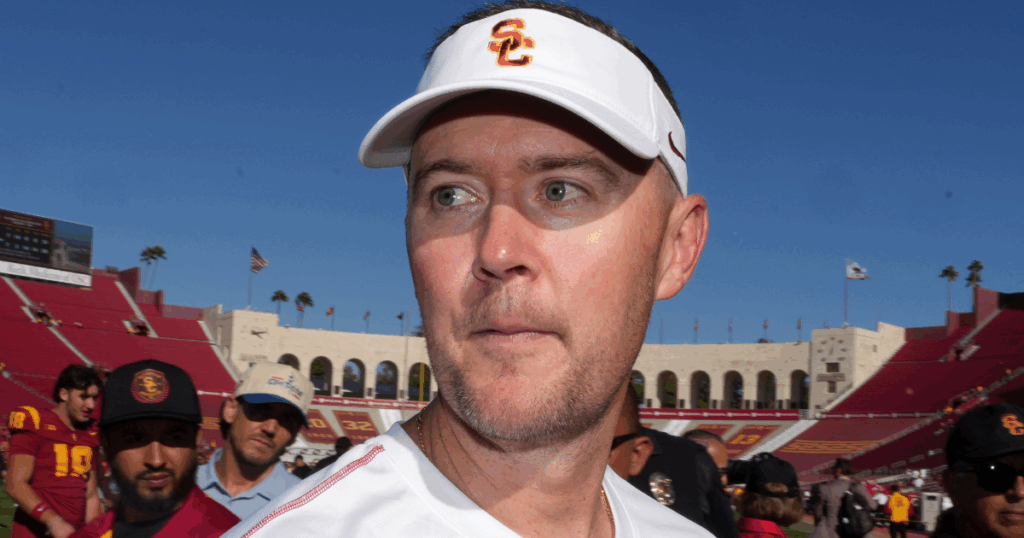
Lincoln Riley was once lauded as one of the best in all of college football. All told, he’s 81-24 in his career, but just 26-14 during his time at USC. He’s still among the better Big Ten coaches and nationwide, but the pressure is mounting to deliver in a big way.
The first Big Ten season didn’t go that well, and that has him feeling warm in 2025. It included losses to Maryland, Michigan and Minnesota. Riley is also 4-10 against ranked teams with the Trojans, a number that he’s not proud of, for sure.
Mike Locksley is one of the more interesting cases in the Big Ten. He’s had some success, but Maryland is going to have to rebuild going into 2025. Expectations are lower than in previous seasons.
While he led the Terrapins to bowl wins three straight seasons, Locksley went 4-8 last year. 2025 might be no different, but he’s been good enough during his time to get something cooking. But if Maryland is continuously blown out? It’ll be hard to keep him around.
DeShaun Foster’s only coached one season for UCLA. It’s too early to tell how he stacks up against other coaches, but UCLA had some positives last year. Still, it was nothing stellar.
At least he’ll get Nico Iamaleava at quarterback this season. That’ll help bring in a lot of attention, especially after a nice finish to 2024. The Bruins started 1-5, but Foster led them to a 4-2 finish. There’s reason for optimism this fall, but if they falter, there will be cause for concern.
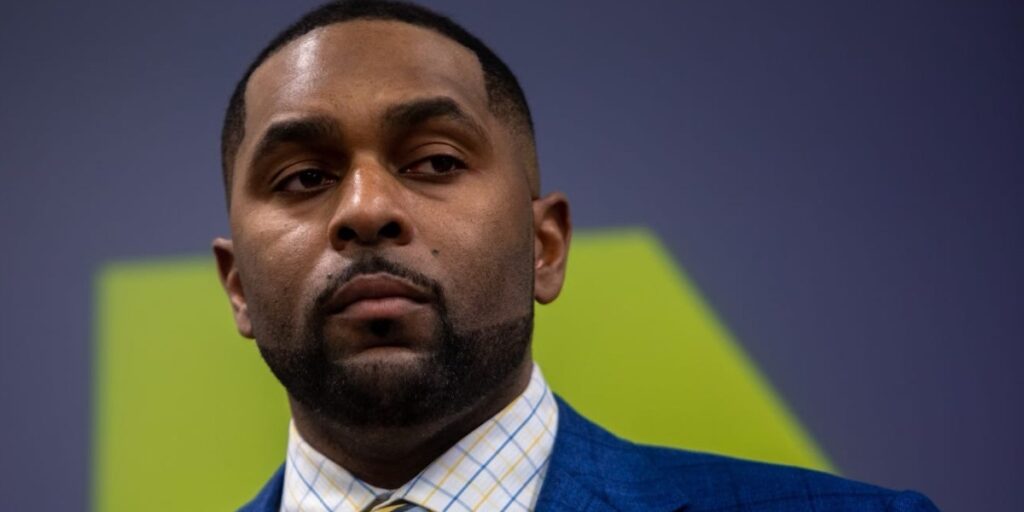
Sherrone Moore was handpicked to replace Jim Harbaugh. Last season, he showed a lot of moxie when he officially took over as head coach. He captained a ship that was far different from the one that won the national title the previous season.
Still, Michigan won games against USC, Ohio State and Alabama in 2024. That looked good for his resume. However, the expectations are to compete for the Big Ten and the College Football Playoff, and if Moore can’t do it, the Wolverines will find someone who can.
Is it time for the Matt Rhule Year 3 jump at Nebraska? That’s what the college football world is expecting, as he looks to lead the Cornhuskers to sustained success in 2025.
That’s been Rhule’s trajectory at his previous stops in Temple and Baylor. Many believe the stage is set for it to happen again, but this is why we play the games. Rhule doesn’t feel in any real danger, but Nebraska fans are starved for success, and they need their coach to deliver it to them.
Big Ten Hot Seat Rankings Continued:
7. David Braun, Northwestern (2)
8. Jonathan Smith, Michigan State (1.78)
9. PJ Fleck, Minnesota (1.78)
10. Kirk Ferentz, Iowa (1.67)
11. Jedd Fisch, Washington (1.56)
12. Greg Schiano, Rutgers (1.44)
13. James Franklin, Penn State (1.33)
14. Barry Odom, Purdue (1)
15. Ryan Day, Ohio State (0.89)
16. Bret Bielema, Illinois (0.78)
17. Curt Cignetti, Indiana (0.22)
18. Dan Lanning, Oregon (0.22)
NIL
NIL Deal, Contract and Salary
A professional basketball player, Kate Martin plays for the Golden State Valkyries of the WNBA. She has been a key player of the Iowa Hawkeyes and has captained the team for four seasons. She was drafted for Las Vegas Aces in the 2024 WNBA draft. She was drafted in the second round, 18th overall. She […]
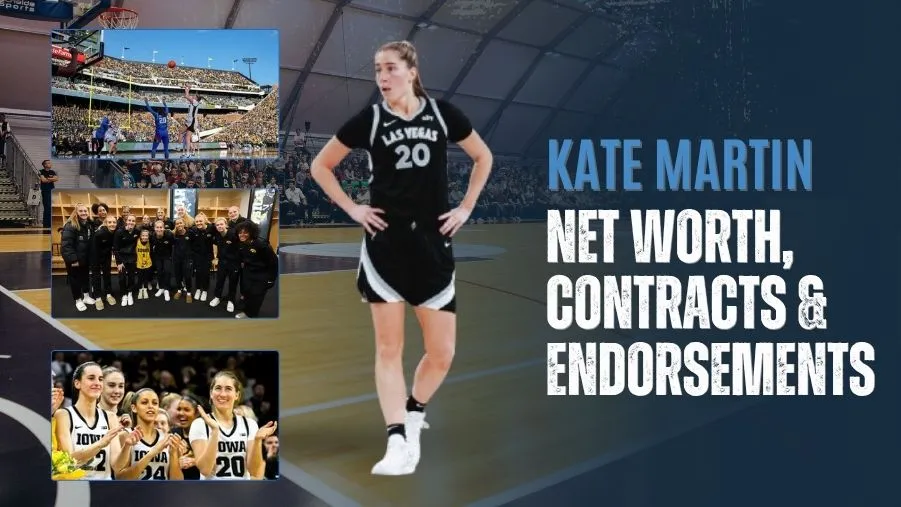
She is known for her strong leadership and teamwork, and the ability to excel on and off court. In May 2025, she also joined the 3 on 3 Unrivaled League and played the first season with the Golden State Valkyries. One of the important features of her game is that she exhibits appropriate work ethics. She spent six years playing in the NCAA Basketball in the University of Iowa before making it to the draft. In December 2023, she became the first woman in Iowa’s basketball history with more than 900 points and more than 500 rebounds. She has earned respect and recognition among her teammates and is nick named ‘Money Martin’ among her team mates.
The main influencing factors that have contributed to her skyrocketing earnings is because she led her team to the NCAA championships twice in a row and her ability to perform well on the court, specifically in clutch situations, becoming a representation of her value to both the professional league and her college team.
Kate Martin’s NIL Deal
Name, Image and Likeness helps players to promote brands and other markets related to sports that helps to increase the player’s profit through endorsements deals, appearances and other commercial activities. Martin’s NIL value stands at approximately $73000.
During Martin’s early pro days, she was able to land some top partnerships that boosted her NIL value. During the Iowa tenure, she partnered with Estela’s Fresh Mex, a real estate company called Mel Foster and Co., Zimmerman Honda, RAYGUN and along with that, launched her Martini shirt line.
The brands that she endorsed with are American Eagle Outfitters, TOGETHXR and Aflac. Her most recent joinings have been with Athleta “Power of She Collective” and the social campaign of Samsung Team Galaxy. Her own brand, Martini, launched varsity tees, hoodies and basketball journeys.
Kate Martin’s Contract
Kate Martin contract is about $297,045, a rookie contract with the Las Vegas Aces in April 2024, averaging $74,261 annually. After being selected 18th overall in the 2024 WNBA Draft, she was picked by the Golden State Valkyries in the December 2024 expansion draft. In her rookie season, Martin averaged 2.6 points, 1.6 rebounds, and 0.9 assists over 34 games, shooting 35.5% from three-point range. Her 2025 salary is set at $68,595, with a team option for 2027.
Kate Martin’s Salary
As per Spotrac, Kate Martin salary is a signed four year $297,045 rookie scale contract with her previous team, the Las Vegas Aces. In her first WNBA season in 2024, Martin earned $67,249. She was recently drafted to the Golden State Valkyries in the 2024 WNBA expansion draft and is set to receive $68,595 in her second WNBA season in 2025.
Her salary is estimated to be $75,456 in 2026, and a team-option year in 2027 worth approximately $85,745, bringing her total earnings over the contract to about $297,045 . The first three years are fully guaranteed, while the final year is contingent on the Valkyries exercising their option, consistent with WNBA rules for a mid to late first round pick.
| Year | Salary |
|---|---|
| 2024 | $67,249 |
| 2025 | $68,595 |
| 2026 | $75,456 |
| 2027 | $85,745 |
Kate Martin’s Net Worth in 2025
As of now, Kate Martin’s net worth is unconfirmed, the source of income and wealth remains from her WNBA contract and other brand endorsements that have also been discussed below. When she was drafted by the Las Vegas Aces, Martin signed a 4 year contract worth $297,045. This led to her earning an average salary of $74,261 in her rookie year. The base salary was estimated to be $67,249 with a cap hit of $67,249. This has also been discussed above.
Kate Martin’s Endorsements
The following are the brands that she partnered with in the form of endorsements during her college years:
- Kate Martin partnered with Estela’s Fresh Mex, an eatery place.
- She partnered with a real estate company called Mel Foster and Co.
- Additionally with Zimmerman Honda, a Honda dealer in Illinois.
- Along with that she also launched her own clothing brand, Martini.
Other national brands include American Eagle Outfitters, TOGETHXR and Aflac. The brand that sponsors her is called Athleta “Power and She Collective.” She was also a part of a social campaign launched by Samsung Team Galaxy.
Athleta
Athleta is an American brand that supports women and is wholly based on women’s clothing. The brand aims for philanthropic methods and donations to make programmes fir. In partnership with the Women’s Sports Foundation, Athleta creates programmes to empower women and girls through movement and connection. Fluid wear is mainly focused on the understanding of the importance of movement in a women, and promotes them to exercise.
Kate Martin’s Car
As of now, nothing is known publicly as to what vehicle is owned by Martin. She was only seen once with a Black SUV, when she was mistakenly left behind by the team bus, of which she posted stories on her Instagram handle. The black SUV might have been arranged by the team itself. Other than that, no recorded information can be seen. Additionally she doesn’t own any other materialistic assets as of now.
NIL
Illinois basketball poised for strong Big Ten title run despite underrated odds
Caesars Sportsbook recently released its Big Ten hoops title odds, and the Illinois basketball team finds itself slotted at fifth with a respectable +1200 to win the conference championship. As discussed on Locked On Illini with host Sunny Verma and me, this ranking places the Illini behind Purdue (+150), Michigan (+360), Ohio State (+575), and […]

Caesars Sportsbook recently released its Big Ten hoops title odds, and the Illinois basketball team finds itself slotted at fifth with a respectable +1200 to win the conference championship.
As discussed on Locked On Illini with host Sunny Verma and me, this ranking places the Illini behind Purdue (+150), Michigan (+360), Ohio State (+575), and UCLA (+750). While the odds might not scream “favorite,” they signal a team ready to compete at a high level in what promises to be a fiercely competitive Big Ten season.
The Illini’s fifth-place projection could spark some surprise for Illini fans. Illinois’ roster this year is a healthy mix of veteran talent and new additions. With players like Kylan Boswell and Tomislav Ivisic returning, and adding the promising Andrej Stojakovic, Illinois boasts a versatile and experienced lineup.
Brad Underwood’s roster construction is loaded with quality players who have played a lot of basketball and have well-defined roles, positioning them as a sleeper to outperform their odds.
Although a team like Ohio State has higher odds and returns more of its star players from last year, they are still banking on improvement for the Buckeyes, which is much less reliable than the chemistry Illinois will aim to build throughout the season.
While Purdue and Michigan lead the pack, Illinois should be up there as well and could argue to have the second-best odds. But for now, bettors will need to live with +1200 odds that offer tremendous value for a program with a proven coach in Underwood and a roster built for success.
The Big Ten is one of the toughest conferences in college basketball, but Illinois has the pieces to make noise. Don’t sleep on the Illini—they’re ready to prove the oddsmakers wrong and light up Champaign with a thrilling 2025 campaign!
-

 Technology2 weeks ago
Technology2 weeks agoPet fitness and wellness trends for a healthier and happier dog
-

 College Sports2 weeks ago
College Sports2 weeks agoWAC to Rebrand to UAC, Add Five New Members in 2026
-

 Motorsports2 weeks ago
Motorsports2 weeks agoWhy Cosmetics are Making Up for Lost Time in Women’s Sports
-

 College Sports2 weeks ago
College Sports2 weeks agoA new era of Dickinson hockey begins behind the bench – The Dickinson Press
-

 Sports3 weeks ago
Sports3 weeks agoSEC Conference imposing a fine will create the opposite effect.
-

 Health2 weeks ago
Health2 weeks agoFlorida assault survivor shares hope for change with new mental health law
-

 Motorsports2 weeks ago
Motorsports2 weeks agoNASCAR This Week – Patriot Publishing LLC
-

 Motorsports1 week ago
Motorsports1 week agoTeam Penske names new leadership
-

 Youtube3 weeks ago
Youtube3 weeks agoFunniest MLB rain delay moments
-

 Sports2 weeks ago
Sports2 weeks agoHow to Market FAST Sports Content to New Audiences










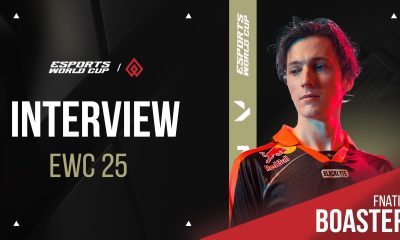

























 | First Take
| First Take


























